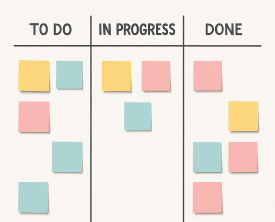12 Top Tips for Choosing Staff Scheduling Software for Small Businesses
By Mark Ballance, Resource Scheduling Specialist at Schedule it Ltd since 2010.
 Here are 12 top tips for choosing the best staff scheduling software to suits your needs and boost your productivity. From user-friendliness to security and scalability, we will cover essential factors to consider during your decision-making process.
Here are 12 top tips for choosing the best staff scheduling software to suits your needs and boost your productivity. From user-friendliness to security and scalability, we will cover essential factors to consider during your decision-making process.Efficient staff scheduling is paramount for businesses and staff alike. Whether you're managing client appointments, staff tasks, or external events, having the right staff scheduling software can make a significant difference.
If you would like a guide on what staff scheduling software is you can read our blog on "What is Staff and Employee Scheduling Software", or continue below for more details on the 12 tips for choosing the ideal software.
1. Define Your Staff Scheduling Needs and Objectives
Before diving into the world of scheduling software, take the time to identify your unique requirements and objectives. Consider the type and frequency of appointments you handle, the number of users who need access, the number of resources you need to schedule, the need for integration with other tools, and the level of customization required. Having a clear understanding of your scheduling needs will guide you towards finding the most suitable solution.2. Prioritize User-Friendliness
The ease of use is a critical factor when choosing scheduling software. A user-friendly interface ensures that you and your team can quickly adapt to the system without significant disruptions. Look for software with an intuitive design, straightforward navigation, and minimal learning curve. A well-designed dashboard and logical workflows can enhance your scheduling experience and reduce the likelihood of errors.3. Verify Compatibility and Integration
In a connected world, seamless integration is essential for efficient scheduling. Confirm that the software you choose can integrate smoothly with other tools you use daily, such as calendars, customer relationship management (CRM) systems, or communication platforms. Integration eliminates duplicate data entry and streamlines your workflow, saving valuable time and effort.4. Mobile Accessibility
As work becomes increasingly mobile, having staff scheduling software with mobile access is crucial. A dedicated mobile app or a responsive web interface enables you to manage appointments on-the-go, keeping you productive regardless of your location. Ensure that the mobile version offers the same features and functionalities as the desktop version.5. Emphasize Customization Options
Each business or individual has unique scheduling requirements. Therefore, opt for software that offers ample customization options. Look for features that allow you to create different calendars for various purposes, set appointment durations, and apply specific booking rules. Customization empowers you to tailor the scheduling process to align with your specific needs.6. Automate Notifications and Reminders
Missed appointments can disrupt schedules and result in lost opportunities. To mitigate this, seek scheduling software that offers automated notifications and reminders for both you and your clients. Email or SMS reminders can significantly reduce no-shows, improving overall efficiency and client satisfaction.7. Prioritize Security and Privacy
The safety of your data is of utmost importance. Ensure that the scheduling software you choose employs robust security measures, such as encryption, to protect sensitive information from unauthorized access. Additionally, verify if the software adheres to relevant data privacy regulations, especially if you handle personal or confidential data.8. Evaluate Customer Support
Effective customer support can be a lifesaver when encountering issues or questions related to the scheduling software. Check the availability and responsiveness of customer support, and evaluate the methods of communication, such as email, live chat, or phone support. Prompt and reliable customer support can save you time and frustration in the long run.9. Consider Scalability
Your scheduling needs might evolve over time, so consider the software's scalability before making a decision. Choose a solution that can grow with your business or personal requirements. Scalability ensures that your scheduling software can accommodate an increasing number of appointments, users, or locations without major disruptions.10. Review Pricing Structure
While cost is an essential factor, don't make it the sole determinant when selecting scheduling software. Instead, carefully review the pricing structure to understand what features are included in each package. Be aware of any hidden costs or limitations that might impact your decision. Opt for a solution that offers good value for your investment and aligns with your budget.11. Take Advantage of Free Trials or Demos
Many providers offer demos and free trials of scheduling software. Take advantage of these opportunities to test-drive the software's features and functionalities firsthand. Use this time to assess how well the software aligns with your requirements and how comfortable you and your team feel while using it.12. Seek User Reviews and Recommendations
Learn from the experiences of others who have used the scheduling software you're considering. Read user reviews on reputable websites, seek recommendations from industry peers, or participate in online forums or social media groups. Real-world feedback from users can provide valuable insights and help you make an informed decision.Conclusion
Choosing the right scheduling software is a crucial step in optimizing your appointment management and enhancing productivity. By identifying your specific needs, prioritizing user-friendliness, ensuring compatibility and integration, and emphasizing security and scalability, you can find the perfect scheduling solution for your business or personal requirements.Don't forget to explore customization options, automate notifications and reminders, and thoroughly evaluate customer support and pricing structures. Armed with these top tips, you'll be well-prepared to streamline your appointments and take your scheduling process to the next level.
Try Schedule it Free
No credit card required. Capterra/G2










